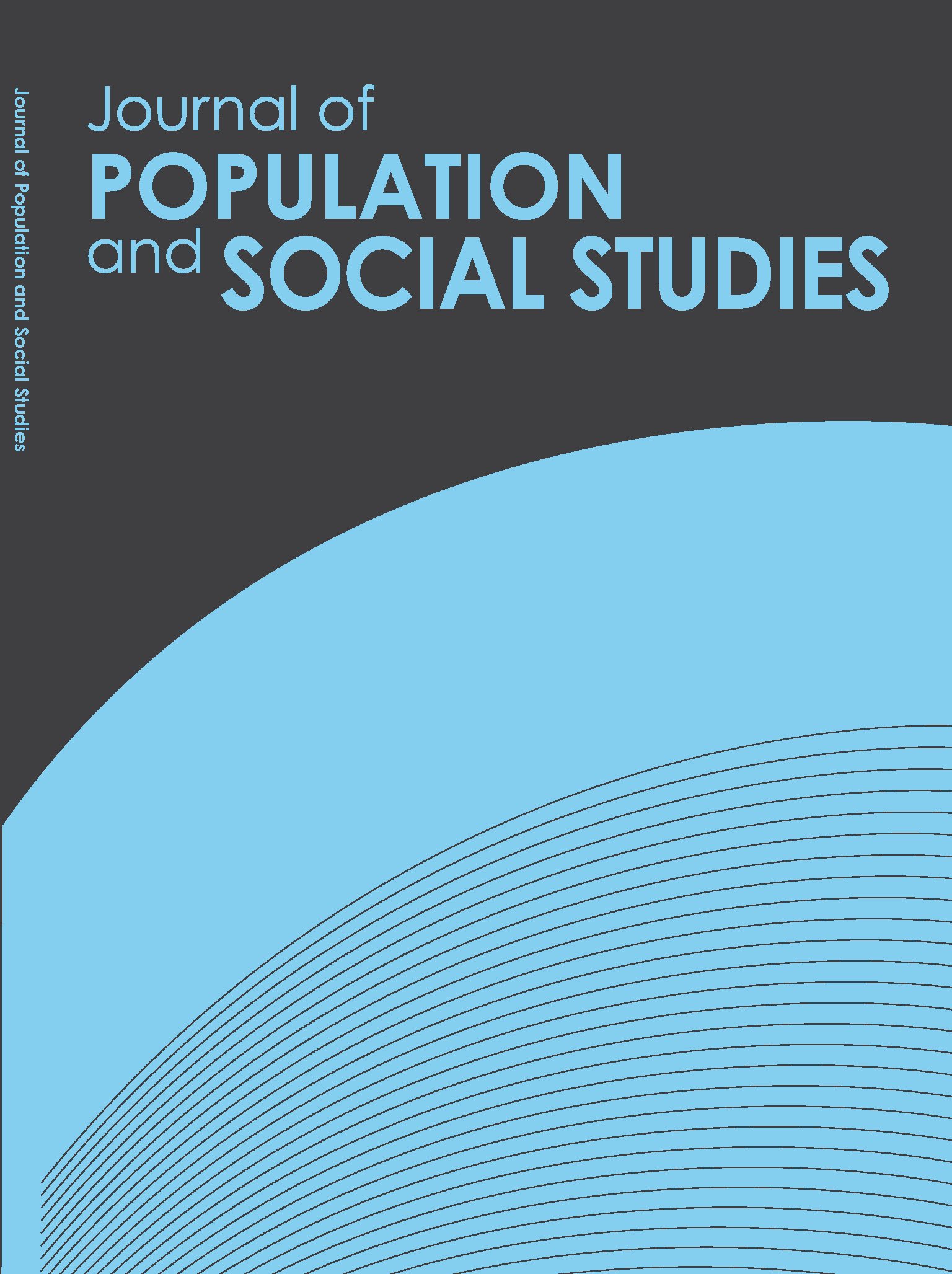Use of Maternal Health Care in Rural India: Relative Importance of Socio-economic Status and Accessibility
Main Article Content
Abstract
Article Details
References
• Ahmed, S. & Mosley, W. H. (2002). ‘Simultaneity in the use of maternal-child health care and contraceptives: Evidence from developing countries’, Demography, vol. 39, no 1, pp. 75-93.
• Balaji, R., Dilip, T. & Duggal, R. (2003). ‘Utilisation of and expenditure on Delivery Care Services: Some Observations from Nashik District Maharshtra’, Regional Health Forum WHO-South-East Asia Region 2003
• Barlow, R. & Diop, F. (1995). ‘Increasing the utilization of cost-effective health services through changes in demand’, Health Policy and Planning, vol.10, no. 3, pp. 284-95.
• Becker, M. H., Maiman, L. A., Kirscht, J. P., Haefner, D. P. & Drachman, R. H. (1977). ‘The Health Belief Model and prediction of dietary compliance: A field experiment’, Journal of Health and Social Behavior vol.18, no. 4, pp. 348-366.
• Bertrand, J. T., Hardee, K., Magnani, R. J. & Angle, M. A. (1995). ‘Access, quality of care and medical barriers in family planning programs’, International Family Planning Perspectives vol. 21, no. 2, pp. 64-69.
• Bhalerao, V. R., Galwankar, M., Kowli, S. S., Kumar, R. & Chauturvedi, R. M. (1984). ‘Contribution of the edu- cation of prospective fathers to the success of a maternal health care programme’, Journal of Postgraduate Medicine vol.30, no.1, pp. 10-12.
• Bloom, S. S., Lippeveld, T. & Wypij, D. (1999). ‘Does antenatal care make a difference to safe delivery? A study in urban Uttar Pradesh, India’, Health Policy and Planning vol.14, no.1, pp.38-48.
• Borghi. J., Ensor, T., Somanathan, A., Lissner, C. & Mills, A. (2006). ‘Mobilising financial resources for maternal health’, The Lancet, vol. 368, no.9545, pp.1457-1465.
• Das, N. P., Mishra, V. K. & Saha, P. K. (2001). ‘Does Community Access Affect the Use of Health and Family Welfare Services in Rural India?’, National Family Health Survey Subject Reports No. 18. Mumbai: International Institute for Population Sciences; and Honolulu: East-West Center.
• Demographic and Health Surveys (DHS), Macro International, Calverton, Maryland. pp. 27-48.
• Elo, I. T. (1992). ‘Utilization of maternal health-care services in Peru: the role of women's education’, Health Transition Review vol. 2, no.1, pp. 49-69.
• Government of India. (1952). First Five Year Plan. New Delhi, Planning Commission
• Govindasamy, P. & Ramesh, B. M. (1997). ‘Maternal Education and the Utilization of Maternal and Child Health Services in India’, National Family Health Survey 24 Subject Reports, No. 5. Mumbai: International Institute for Population Sciences; and Calverton: Macro International, Demographic and Health Surveys (DHS).
• Griffiths, P. & Stephenson, R. (2001). ‘Understanding users’ perspectives of barriers to maternal health care use in Maharashtra, India’, Journal of Biosocial Science vol. 33, no. 3, pp. 339-359.
• International Institute for Population Sciences (IIPS), 2010. District Level Household and Facility Survey (DLHS-3), 2007-08: India. Mumbai: IIPS.
• International Institute for Population Sciences (IIPS) and ORC Macro. (2007). National Family Health Survey (NFHS-3), 2005-06: India. Mumbai: IIPS.
• International Institute for Population Sciences (IIPS) and ORC Macro. (1995). National Family Health Survey (NFHS-1), 1992-93: India. Mumbai: IIPS.
• Kanitikar, T. & Sinha, R. K. (1989). ‘Antenatal care services in five states in India’, S. N. Singh (eds.), Population Transition in India, Delhi: B.R Publishing.
• Kesterton, A. J., Cleland, J., Sloggett, A. & Ronsmans, C. (2010). ‘Institutional delivery in rural India: the relative importance of accessibility and economic status’, BMC Pregnancy and Childbirth, vol.10, no.30, pp.1-9.
• Khan, Z., Soomro, G. Y. & Soomro, S. (1994). ‘Mother's education and utilization of health care services in Pakistan’, Pakistan Development Review, vol. 33, no.4, pp. 1155-66.
• Koenig, M. A. & Khan, M. E. (1999). Improving Quality of Care in India’s Family Welfare Programme: The Challenge Ahead. New York: The Population Council.
• Kumar, R., Singh, M. M. & Kaur, M. (1997). ‘Impact of health centre availability on utilization of maternity care and pregnancy outcome in a rural area of Haryana’, Journal of the Indian Medical Association, vol. 95, no. 8, pp. 448-50.
• Levine, R. E., Cross, H. E., Chhabra, S & Viswanathan, H. (1992). ‘Quality of health and family planning services in rural Uttar Pradesh: the client's views’, Demography India, vol. 21, no. 2, pp. 247-65.
• Mbizvo, M. T. & Bassett, M. T. (1996). ‘Reproductive health and AIDS prevention in sub-Saharan Africa: The case for increased male participation’, Health Policy and Planning, vol. 11, no. 1, pp. 84-92.
• Rao, P. S. & Richard J. (1984). ‘Socio-economic and demographic correlates of medical care and health practices’, Journal of Biosocial Science, vol. 16, no. 3, pp. 343-55.
• Rohde, J. & Viswanathan, H. (1995). The Rural Private Practitioner. New York: Oxford University Press.
• Sarita, P. T. & Tuominen, R. (1993). ‘Use of health care services in two rural communities in Tanzania’, Community Dentistry and Oral Epidemiology, vol. 21, no. 3, pp. 133-45.
• Shelton, J. D. & Davis, S. S. (1996). ‘Some priorities in maximizing access to and quality of contraceptive services’, Advances in Contraception, vol. 12, no. 3, pp. 233-47.
• Swenson, I. E., Thang, N. M., Nham, V. Q. & Tieu, P. X. (1993). ‘Factors related to the utilization of prenatal care in Vietnam’, Journal of Tropical Medicine and Hygiene, vol. 96, no. 2, pp. 76-85.
• Tsui, A. O., Wasserheit, J. N. & Haaga, J. G. (1997). Reproductive Health in Developing Countries: Expanding Dimensions, Building Solutions. Washington, D.C.: National Academy Press.
• United Nations. (2003). Indicators for Monitoring the Millennium Development Goals: Definitions, Rationale, Concepts and Sources. New York, United Nations.
• WHO, UNICEF, UNFPA & World Bank. (2010). Trends in Maternal Mortality: 1990 to 2008. Estimates developed by WHO, UNICEF, UNFPA and The World Bank. Geneva, World Health Organization.
• World Health Organization (WHO). (2004). Making Pregnancy Safer: The Critical role of the Skilled Attendant: A Joint Statement by WHO, ICM and FIGO. Geneva: WHO.
• World Health Organization (WHO). (2005). World Health Report 2005: Make Every Mother and Child Count. Geneva: WHO.


